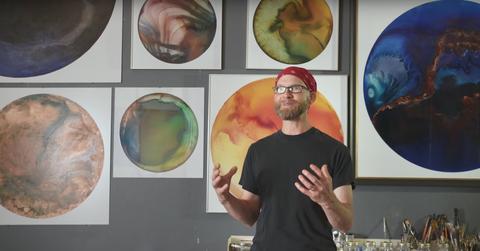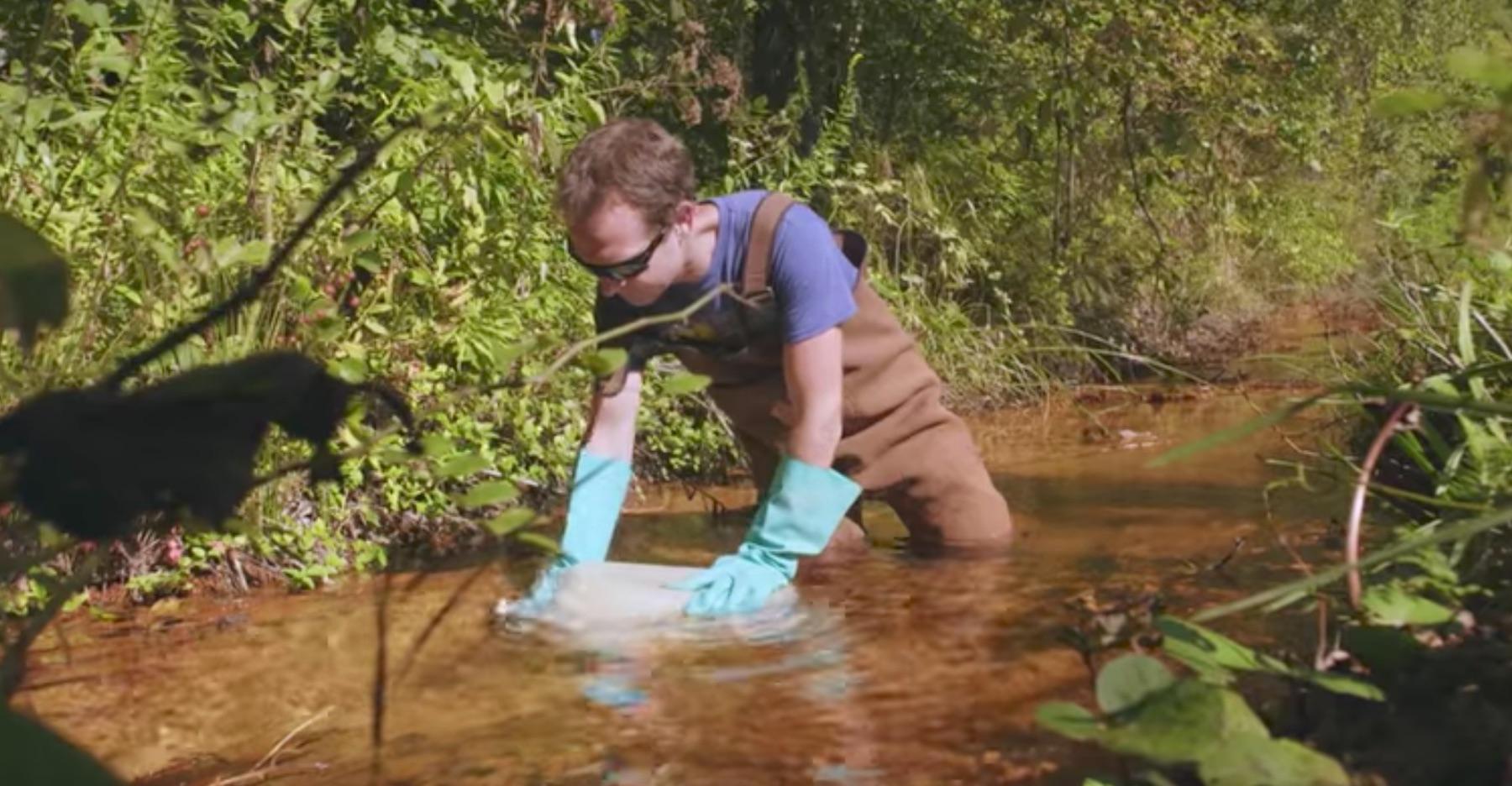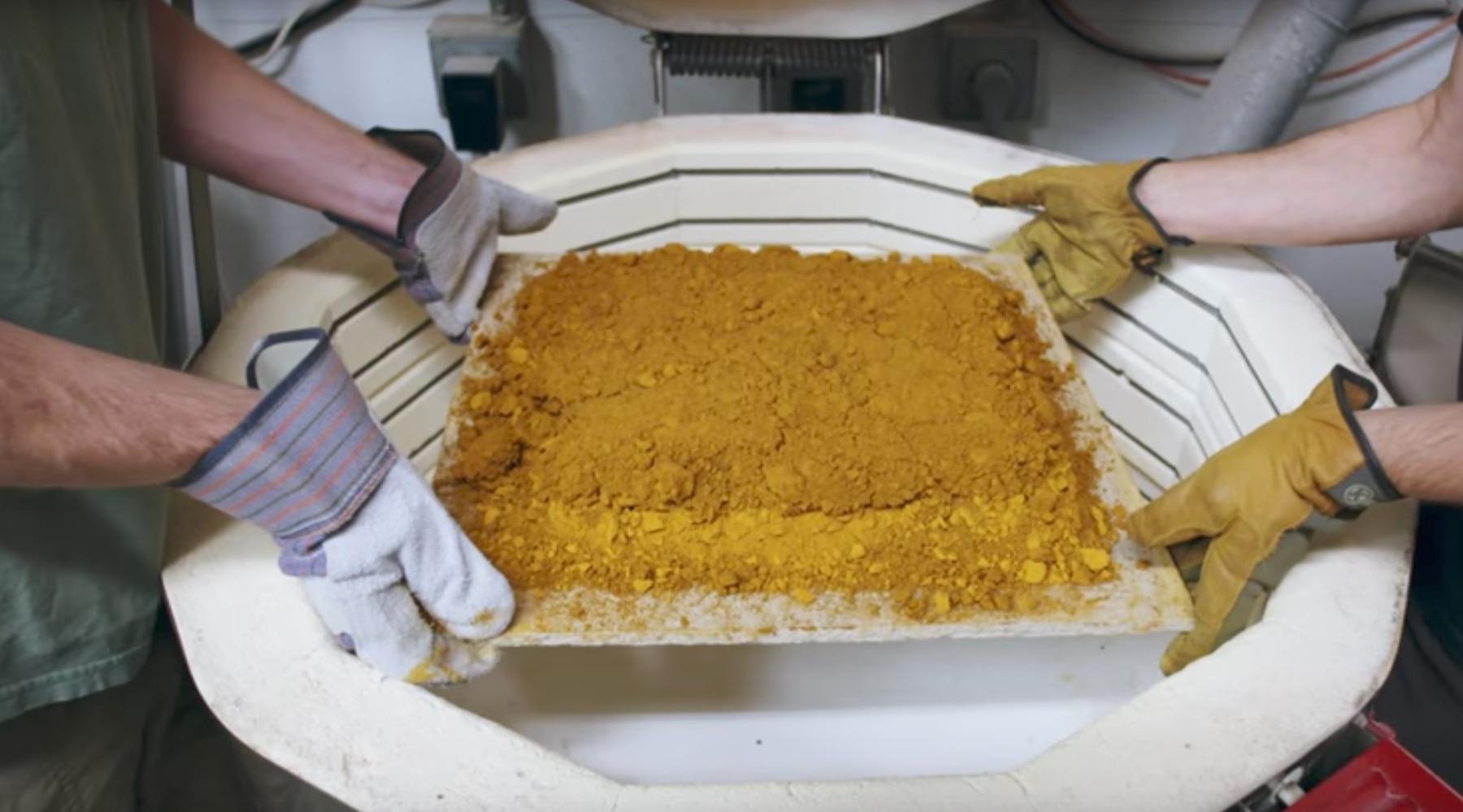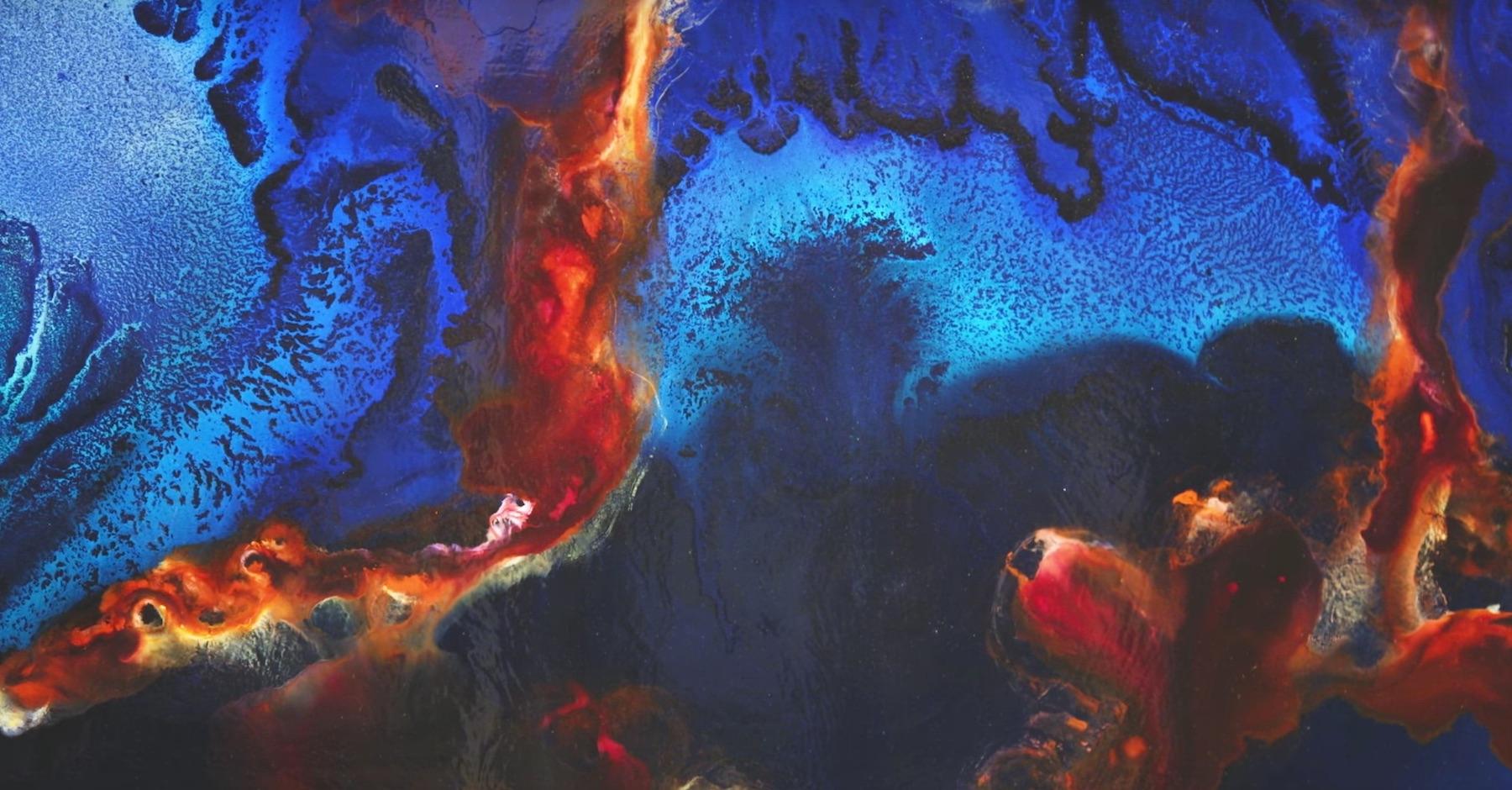How An Artist And A Scientist Transform Polluted Water Into Paint
An artist and a scientist have paired up to find a way to clean Ohio's murky waterways while building a sustainable paint-making company, turning pollution into pigments.
Updated May 18 2019, 5:39 a.m. ET
Artist John Sabraw has been working with civil engineer and Ohio State University professor Guy Riefler on a project intended to highlight a big problem for Ohio's rivers. Treehugger reports that mining activity has polluted the water in many areas, leaching heavy metals and other toxins into the water from improperly sealed coal mines. An estimated 1,300 miles of waterway have been effected by acid mine drainage, the acidic water that flows from the places where people once worked. Some of the mines still polluting the water are over a hundred years old.
Riefler conducted experiments with his students at the university and discovered that it was fairly easy to separate the water from the iron inside, at least in small jug-sized batches. He told science blog ASME, "You just neutralize the water with the addition of a base to adjust the ph, and then oxidize the water. The ferrous iron converts to ferric iron and precipitates out."
While separating the iron out was easy, turning it into pigment was beyond Riefler's experience. He reached out to Sabraw because he knew that he had experience making his own paints, and a collaboration was born.
They collect water:
Separate the iron and other toxins:
Then turn it into pigment through various heating processes. Sabraw has said it's a little like "toasting bread."
Sabraw has been producing vivid and beautiful paintings with the results and the pair are hoping that paint made through this process could become a marketable product, one that would could pay to clean some of Ohio's waterways. To make that possible, they'd have to build a plant that could process the water quickly, since Riefler's lab isn't outfitted to go through so many gallons a day. But they both believe it could not only be profitable, but ecologically sustainable. Sabraw says:
"The proceeds from selling the pigment will pay for the plant, it will pay for the employees and it will pay for the cleanup of a stream. The moment that the plant becomes viable is the moment that the stream goes back to biological viability. It's not a 10-year thing, it's not a 20-year thing, it's not a 50-year thing, it's a tomorrow kind of thing."
So far, most of Riefler's work has been funded by the U.S. Forest Service, who are struggling to deal with acid mine drainage in the nearby Anthony Wayne National Forest. To take things to the next level, they'll need more funding, but for now the idea paints a beautiful picture.



